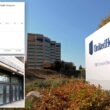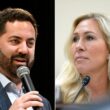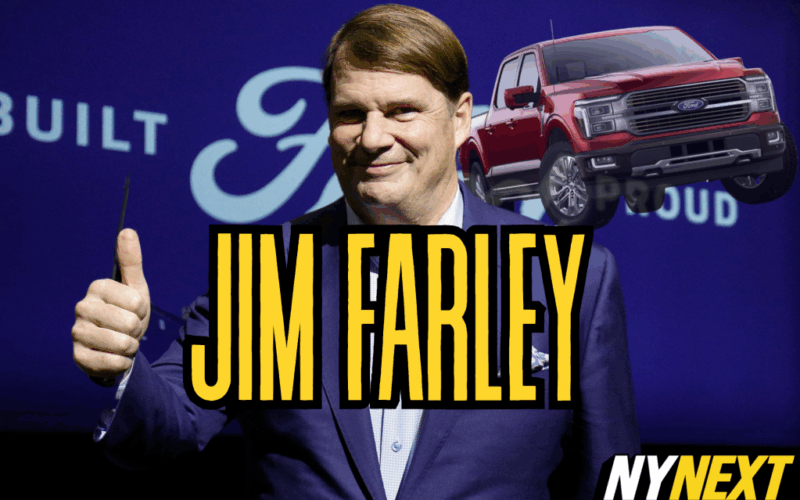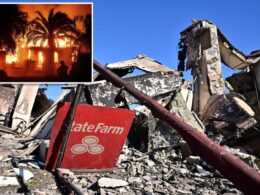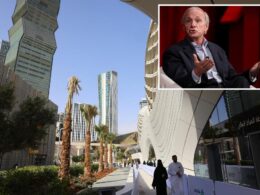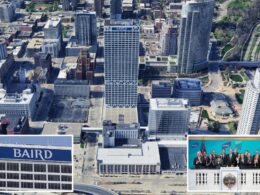Nearly two months after Donald Trump’s far-reaching tariffs were unveiled, Ford Motors CEO Jim Farley told me how — despite that added complexity — he has never been more optimistic about Ford’s future.
“I mean, how exciting is it to go from being criticized for our US plants — in every investor meeting I had, [hearing] why do you make so much in the US, why don’t you localize overseas, why don’t you do more of what your competitors do? — to actually be advantaged because we’re building an American car company and always have.”
Despite globalization, Ford, a publicly traded but family-controlled company, has consistently invested in American operations, manufacturing high-value products domestically and exporting more than it imports. It’s the largest US automaker by domestic production, and the F-150 is the biggest consumer product by revenue actually made in America, according to BCG.
The Trump administration’s focus on American manufacturing, Farley said, aligns with Ford’s long-standing strategy.
“We’re not quite there yet,” he said of how tariffs could motivate re-shoring, “but that’s the place we’re gonna be.”
Getting it right has never been more challenging, amid global supply chain disruptions and economic uncertainty. Even with its emphasis on being an American company, Ford still sources a number of parts from outside the US, particularly China.
While some high-value parts such as transmissions could be re-shored, others, like wiring looms and bolts haven’t been made Stateside in decades. Starting that market up again would, realistically, be cost-prohibitive. On its earnings call, Ford said that the tariffs could increase its costs as much as $1.5 billion this year on adjusted earnings.
“If we made 100% of the parts in the US and not [Ford’s current] 85%, that 15% times the US premium for all the other things I mentioned would add thousands,” Farley said.
For years, Ford “just had a lower margin … It cost us a billion dollars a year [to manufacture so much domestically], and Wall Street wasn’t happy with that.”
He has been speaking with the White House about the balance between affordability and making goods in America on an almost daily basis since March.
“[The White House and I are] working all those details every day. And I’m, very frankly, grateful,” Farley told me. “They are really trying hard to work through the details.”
Uncertainty about parts is also why, on an earnings call last week, Ford made the highly unusual move of suspending guidance for the rest of the year. Since then, Trump has hammered out a deal with China — providing enough clarity, Farley said, that the carmaker may be able to reinstate guidance.
“There are thousands of pieces in an F-150… we can’t make it without parts from China,” Farley said.
But now? “Our parts just got more affordable.”
This deal not only secures a more cost-effective supply chain but also may allow Ford to resume exports of its high-end vehicles, which remain highly popular in China — boosting production, bringing furloughed workers back and strengthening the company’s position globally.
“I know how powerful tariffs are for changing fairness,” Farley added — noting that China, Japan, and South Korea have all been subsidizing car companies for years, to the tune of $2,000 to $3,000 a vehicle.
“It may not even be high enough for that to happen, depends on the country. But it’s the fairest fight we’ve had in a couple of decades.”
And other considerations, including tax policy and emissions standards, will impact the company just as much as tariffs. The company has also faced a handful of setbacks over recalls — on Tuesday, Ford announced it was a battery recall affecting 270,000 vehicles.
“China has decided vehicles are one of their key industries. [The US] can’t just hole up … and hope everything is fine,” Farley said. Instead, he envisions America being a net exporter of vehicles across China, the rest of Asia and even the rest of the world.
Ford’s global outlook has also shown Farley what happens when other countries, like Australia and England, eschew manufacturing.
This story is part of NYNext, an indispensable insider insight into the innovations, moonshots and political chess moves that matter most to NYC’s power players (and those who aspire to be).
“Personally, I watched the Australian government give up manufacturing, and they regret it deeply,” he said — noting that, In Britain, “people felt like they couldn’t make their lives better… [which is why] Brexit happened.”
And it couldn’t come any sooner. “We still have more work to do as a country, around critical minerals, semiconductors and other things that we just outsourced and we lost the plot,” Farley said.
The car industry, he added, is “now energy independent. We need to be industrially independent. And Ford will be in the middle of that … and we need to do it fast.”
Running Ford is also a remarkably personal story for Farley.
His grandfather was hired in 1913 as Henry Ford’s employee #389 and was one of the first workers to help build the Model T.
After spending the first 20 years of his career at Toyota — much to his family’s chagrin, he jokes — Farley decided to leave California and move to Detroit to help rebuild after the 2008 financial crisis (Unlike GM and Chrysler, Ford did not take a bailout but continued to invest in the US). He joined as an executive and was elevated to CEO in 2020.
When he isn’t running Ford, Farley is constructing model cars with as many as 3,000 pieces or working on old Fords and other race cars.
“I’m a one trick pony. I work on my old cars on the weekend. I race cars, I build model cars, all my friends are car people,” he said. “I mean, this is my life. This is all I got, all I’ve got. And I know how important it is for our country.”
Send NYNext a tip: nynextlydia@nypost.com


